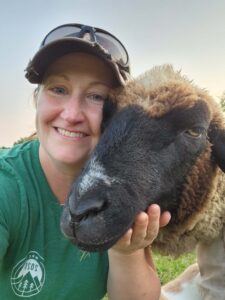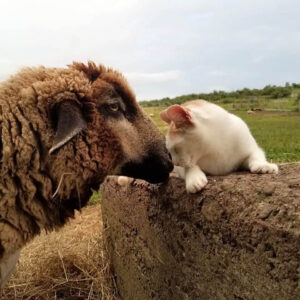By Heather Loomis
 As farmers, we often focus our outreach efforts on how we farm. The reality is, most consumers do not understand or care about these topics. What should we be sharing with them? Our stories! Storytelling is one of the greatest ways to gather interest from the general public. You can then begin building a relationship that may result in them becoming a customer. Let’s see what this might look like across two forms of marketing.
As farmers, we often focus our outreach efforts on how we farm. The reality is, most consumers do not understand or care about these topics. What should we be sharing with them? Our stories! Storytelling is one of the greatest ways to gather interest from the general public. You can then begin building a relationship that may result in them becoming a customer. Let’s see what this might look like across two forms of marketing.
Social Media
Telling your story on Instagram and Facebook is one of the easiest ways to connect with customers and build community. Sharing pictures regularly welcomes people onto your farm and into your business.
Inviting customers into your work space allows you to become both relatable and credible, which builds trust. Once you have their trust, you can begin helping them solve the problems they face, such as a need for healthy meat for their family, a goat milk soap perfect for sensitive skin, or a new type of wool for their next project.
What can you possibly post about 3 to 5 times per week?
As someone raising animals, you have an endless amount of content! Pictures of farm animals enjoying their days are fun to share and are always popular. Posting about tasks such as barn cleaning, feeding times, hay making, the joys of births, and even the difficult times of injury or loss connect you to the people following your farm.
Change things up with a beautiful sunrise or sunset, buckets of milk, freshly shorn fleeces, or cuts of meat. And, don’t forget about you! Building trust and relatability with customers means they have a chance to see the person behind the camera (and manure fork). My farm’s Facebook page is www.facebook.com/bohlayersorchards, but I also think Swan Farm Akhal-Tekes and Little Flower Farm do a great job.
Pro Tip: The addition of the farm cat in your pictures from time to time is certain to increase engagement!
Website
 The content on your website should be clear and concise. Most importantly, it should tell your story. Key points to consider for your website include:
The content on your website should be clear and concise. Most importantly, it should tell your story. Key points to consider for your website include:
- The Home Page should contain one sentence placed prominently that states what you do. An example would be Our family raises heritage grass-fed beef to help feed your family.
- The upper right hand corner of your website is your call-to-action area and should include a “Buy Now” button, as well as links to your social media accounts.
- On your About page, consider sharing a problem and a solution for your customer. Then go on to share more about yourself and who you are. If you make yourself relatable, you will make yourself credible. For example: It can be difficult to find better meat and know how to cook it. That’s why we provide grass-fed beef raised locally by your neighbors. We’ll even give you recipes and guidance to help you prepare a healthy meal for your family. In 2008, we struggled to find this exact product….
Feel free to explore my website at www.bohlayersorchards.com for more ideas.
Remember, in all of your story telling, keep the reader in mind as an important part of the story. They are (or will become) your customers, and it is the customer who is the true champion. After engaging with your content, they determine you are worth investing in and they desire to be a part of your story. This investment enables you to run a business and continue saving rare breeds. Be certain to thank and celebrate these customers and tell the story they make a difference!
There is so much to consider when marketing our farms and it can become overwhelming. A beginning step is telling the story of who you are.
***
Heather Loomis is a Romeldale CVM Shepherdess and Shave ‘Em to Save ‘Em fiber provider. Her family’s Bohlayer’s Orchards Farm is located in Troy, Pennsylvania. Heather is a former member of The Livestock Conservancy’s board of directors.



